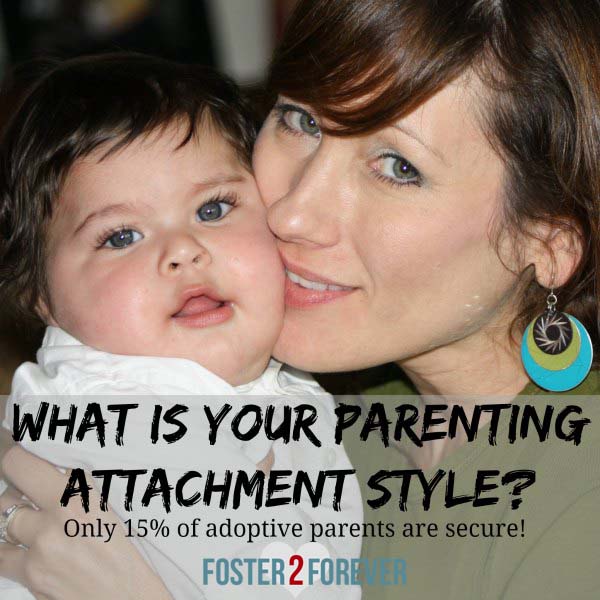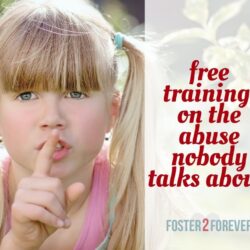What does your parents’ attachment style have to do with you?
EVERYTHING! The best predictor of a person’s attachment style is their parents’ attachment style. A person’s attachment style for parenting is developed while very young and is usually stable throughout their lifetime. In other words, we tend to parent the way we were parented. Only 15% of foster/adoptive parents are secure in their attachment!
4 Attachment Styles
(review these to determine your parents’ attachment style)
- Secure
- Insecure (organized) – Avoidant
- Insecure (organized) – Ambivalent
- Insecure – Disorganized
Research indicates that children who were raised in a home with secure attachments, will in turn parent their children with a secure attachment style. 60% of the general population have a secure attachment style.
Adults who were raised in a home with an avoidant attachment style will parent their children with a dismissive attachment style. Dismissively attached adults are excellent at providing for physical needs but are weak in their ability to combine the emotional response with the physical need. Dismissive parents struggle with emotional connection and valuing relationships.
Those adults who were raised in a home with an ambivalent attachment style will parent their children with a preoccupied attachment style. They may provide inconsistent and unpredictable care to their child, at times being available, and at other times being too overwhelmed or busy to respond appropriately to their children’s needs.
And those adults who were raised by parents with a disorganized attachment style will parent their children with unresolved issues affecting their attachment. Oftentimes, these are well-meaning adults who are excellent caregivers when their own trauma isn’t being triggered. However, when the parent’s trauma is triggered, these parents become emotionally or behaviorally unpredictable or even scary to the child, thus not allowing the child’s to attach securely to the parent.
| PARENTS ATTACHMENT STYLE | ADULT ATTACHMENT STYLE | GENERAL POPULATION | FOSTER/ADOPT PARENTS |
|---|---|---|---|
| Secure | Secure | 60% | 15% |
| Insecure - Avoidant | Dismissive | 20% | 40% |
| Insecure - Ambivalent | Preoccupied | 15% | 15% |
| Disorganized | Unresolved | 5% | 30% |
What is your attachment parenting style?
While 60% of the general population has a secure attachment style, only 15% of foster/adoptive parents are secure in their attachment style!
70% of foster/adoptive parents have dismissive or unresolved attachment styles!
How can we help our children attain a secure attachment style if we have an insecure attachment style?
If you see that your attachment history is not secure, don’t fret, there is good news! Researchers and clinicians agree that it is possible for adults to develop “earned” secure attachment.
- Journaling
- Prayer
- Developing a practice of mindfulness of your parenting
- Talking with a trusted friend or spouse
- Professional counseling
- Group counseling or parent support group
It is not what happened to you as a child that matters — it’s how you make sense of what happened to you. You need to understand the impact of your childhood experiences, and you must acknowledge the positive and negative aspects of your childhood. The important thing is for you to be able to reflect on your childhood experiences without becoming overcome with emotion, flooded with the past, and preoccupied with the present.
Source: Gobbel Counseling
http://orphancareresources.org/resource/parents-attachment-style






[…] Many of you expressed a fear over whether social workers would think you would make a good foster or adoptive parent. The post Should Survivors of Abuse Be Foster Parents or Adoptive Parents covered some actions you might want to take to prepare yourself. If you have triumphed over childhood abuse or neglect, you may be interested in another tool I uncovered in Penelope’s post at Foster2Forever The Attachment Style of Your Parents Determines Yours. […]